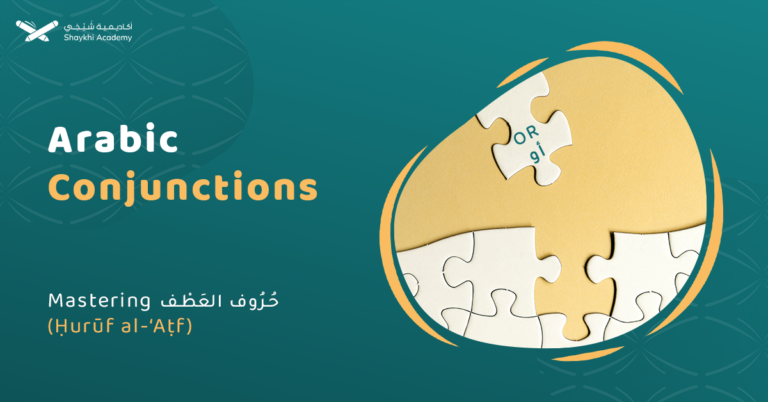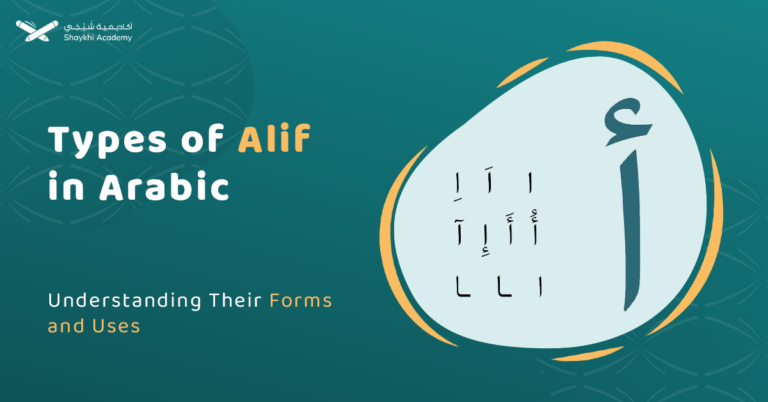Arabic detached pronouns are independent words used as subjects, objects, or possessives, categorized by number and gender. They include pronouns like “أنا” (I) and “إياه” (Him), essential for clear sentence structure and meaning.
When we say pronouns, the first thing that comes to mind is Detached pronouns. Although detached pronouns in Arabic are the main pronouns, they resemble a part of the personal pronouns, and the other part is the attached pronouns.
Their importance comes from showing us the cases to which other pronouns can be referred. Here is a comprehensive guide about all Detached pronouns, their meaning, and their usage in the Arabic context.
Detached Pronouns in Arabic
Arabic detached pronouns are pronouns that can stand independently in a sentence, without the need to be attached to another word. These pronouns share common characteristics with other Arabic pronouns, including being fixed in form (i.e., they are not derived from other words) and having consistent diacritics on their final letter, regardless of their grammatical case (known as Mabni).
Detached Pronouns in Arabic can be categorized based on two key aspects:
- Role in the Sentence: They can function as the subject, object, or possessive in a sentence.
- Number and Gender or grammatical case: Detached pronouns change according to the number (singular, dual, or plural) and gender (masculine or feminine) of the person being referred to.
1. Role in the Sentence of Arabic Detached Pronouns
The pronouns in the conversation are in three cases. They can mean the speaker (first person) or other persons. The other person may be present (second person) or absent (third person).
In Arabic, The first person means Al motakalim المتكلم. The second person is called Mukhaṭab المخاطب, which means the addressee. The third person is called Al ghaib, which means Absent.
After these divisions, they are further subdivided into singular, dual, and pleural as the following chart explain

2. Number and Gender or grammatical case
The Detached pronouns are divided into subjective Detached pronouns and objective detached pronouns. You can easily differentiate the objective detached pronouns. Since they all start with the prefix “إيا”. They usually come in verbal sentences as a direct object.
All The Detached Pronouns in Arabic With Meaning In English
The detached pronouns are used extensively as they show us the gender, the number, and the role of the pronoun. Arabic detached pronouns are more precise in conducting the meaning see the following table that shows the meaning of All detached pronouns.
| pronoun | English Alternative |
| أنا Ana | I |
| نحن Nahno | We |
| هو Hwa | He |
| هي Heya | She |
| هما Homa | They both |
| هم HOM | They “When talking about men or men and women” |
| هن Hon | They “When talking about women” |
| أنتَ Anta | You (when speaking to a man) |
| أنتِ Anti | You (when speaking to a woman) |
| أنتما Antoma | You both |
| أنتم Antom | You (when talking with a group of men) |
| أنتن Anton | You (when talking with a group of women) |
| إياي Iyay | Me |
| إيانا Iyana | Our |
| إياكَ Iyaka | You (to a man) |
| أياكِ Iyaki | You (to a woman) |
| إياكم Iyakom | You (to a group of people) |
| إياكن Iyakon | You (to a group of women) |
| أياكما Iyakoma | You both |
| إياه Iyaho | Him |
| إياها Iyaha | Her |
| إياهما Iyahoma | Them “to 2 persons” |
| إياهم Iyahom | Them (when talking to men) |
| إياهن Iyahon | Them (when talking to women) |
The different dialects have different details. For example, the Egyptian dialect canceled the dual and feminine pleural pronouns. Objective pronouns are rarely used. You study the Egyptian dialects in our Egyptian Arabic Learning Course. We also have courses for other dialects.
Examples of The Arabic Detached Pronouns In A Sentence:
The detached pronouns perform many functions in the sentence. For example, the subjective pronouns can be subject مبتدأ mobtadaa or Conjoined upon another subjective noun. While the objective pronouns come usually before the verb and act as the object. They can also be conjoined upon objective nouns.
The following examples can help us to know the function of the detached pronouns.
| pronoun | example | translation | Transliteration | Their function grammatically |
| أنا | أنا أحب أمي | I love my mum | Anaa uḥibbu umami | Subject (Nominative) |
| أنتَ | اذهب أنتَ | Return to home | Idhab anta | Subject (Nominative, Emphatic) |
| هم | هم الذين لعبوا | They are who played | Hum alladheena la‘iboo | Subject (Nominative) |
| إياك | إياك ندعو | We pray to You | Iyyaaka nad‘oo | Object (Accusative, Emphatic) |
| إياكم | أكلنا وإياكم | We eat and you | Akalnaa wa iyyaakum | Object (Accusative, Conjunctive) |
You can deepen your understanding by reading more Arabic text online and trying to know the grammatical function of the detached pronouns. You can now enjoy reading the Arabic texts. You can improve your Arabic reading proficiency with our Arabic Reading course.
Exercises
You can now check your understanding with the following few examples. You can practice many examples in our Arabic Group Classes Online. We provide an interactive learning environment online. This can help you understand all the rules of the Arabic language with practice.
1. Extract the pronoun and mention its type in the following sentence:
In the following sentences, extract the detached pronoun and determine its type (Subject pronoun, Object pronoun, etc.).
| Sentence | Extracted Detached Pronoun | Pronoun Type |
| 1. أنا أحب مدرستي | أنا | Subject Pronoun |
| 2. أنت أخي | أنت | Subject Pronoun |
| 3. هم الأفضل | هم | Subject Pronoun |
| 4. أنتم مجتهدون | أنتم | Subject Pronoun |
| 5. أنتن رائعات | أنتن | Subject Pronoun |
Notes:
- Detached pronouns are pronouns that stand alone in a sentence and are not attached to any verb, noun, or preposition.
- The extracted pronouns in the sentences above are all subject pronouns, as they represent the subject of the sentence.
2. Match the pronoun with its meaning in the sentence:
Match each pronoun with its correct meaning in the sentences below. The sentences are in Arabic, and you need to identify the meaning of the pronoun in each case.
| English Pronoun | Arabic Sentence | Meaning of the Pronoun |
| I | نحن نحب العمل | نحن (We) |
| Him | إياه أعطي المال | إياه (Him) |
| Her | إياها أحببت | إياها (Her) |
| You | قم أنت قف | أنت (You) |
| We | أنت مهذب | أنت (You) |
Explanation:
- أنا (I): Used when referring to oneself.
- أنت (You): Used when addressing one person directly.
- هو (Him): Refers to a male person or object in the third person.
- هي (Her): Refers to a female person or object in the third person.
- نحن (We): Used when referring to a group of people including the speaker.
3. Choose the Suitable Pronouns for Each Sentence (Second-Person or Third-Person):
Select the correct second-person or third-person pronoun for each sentence.
| Sentence | Second-Person Pronoun | Third-Person Pronoun |
| 1. الطالبة المجتهدة | أنتِ | هي |
| 2. العاملون المجتهدون | أنتم | هم |
| 3. العاملات المجتهدات | أنتن | هن |
| 4. الطالب المجتهد | أنتَ | هو |
| 5. الطالبتان المجتهدتان | أنتما | هما |
Note:
- Second-person pronouns refer to the person or people you are addressing.
- Third-person pronouns refer to people or things that are being talked about.
Explore All Arabic Rules with Shaykhi Academy:
Enroll in our Arabic Grammar course to learn Arabic rules with minimal effort. Our specialist can start with you from scratch till you get familiar with all the grammatical rules.
After this course, you will be able to comprehend any Arabic grammar terms in English, identify different speech parts, and analyze any Arabic text. Why wait? Join now and enjoy your free trial here. Don’t miss this opportunity!
Why Shaykhi Academy?
- Expert Native Tutors: Learn from highly qualified native Arabic speakers.
- Flexible Scheduling: Tailor your classes to fit your busy life.
- Affordable Learning: Access top-quality education at a price that suits you.
- Global Access: Study from anywhere in the world.
Explore Our Arabic Courses:
- Noorani Qaida: Build a strong foundation in Quranic Arabic.
- Comprehensive Arabic Courses: Master the Arabic language, from beginner to advanced levels.
- Fusha Arabic Classes: Delve into Modern Standard Arabic, the key to understanding literature, media, and formal communication across the Arab world.
- Quranic Arabic Course: Enhance your connection with the Quran by learning the language in which it was revealed.
Start Your Arabic Journey Today! Whether you’re just starting or looking to deepen your knowledge, Shaykhi Academy is here to support your journey. Book your free trial now and begin your path to Arabic mastery!
Conclusion
Arabic detached pronouns are independent words that function as the subject, object, or possessive in a sentence. They are fixed in form and consistent in diacritics across different grammatical cases. These pronouns are categorized by number (singular, dual, plural) and gender (masculine, feminine).
They include subjective pronouns like “أنا” (I) and “هو” (He), and objective pronouns like “إياي” (Me) and “إياه” (Him). Mastery of these pronouns helps clarify the subject, object, and possessive relationships in a sentence, enhancing communication in Arabic.
Learning the detached pronouns in Arabic will increase your confidence during conversation. They are very accurate in the Arabic language. They can explain information related to the number, the gender, and the role of the person during the conversation.
Each defined case of the detached pronouns has 2 forms, the subjective form and the objective form. You can use any form according to the grammatical position. Using all detached pronouns during the Arabic context results in beautifying the language and facilitating conduction of information.















































